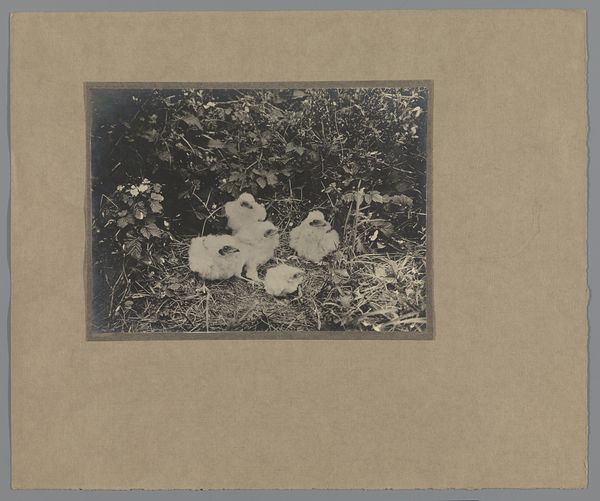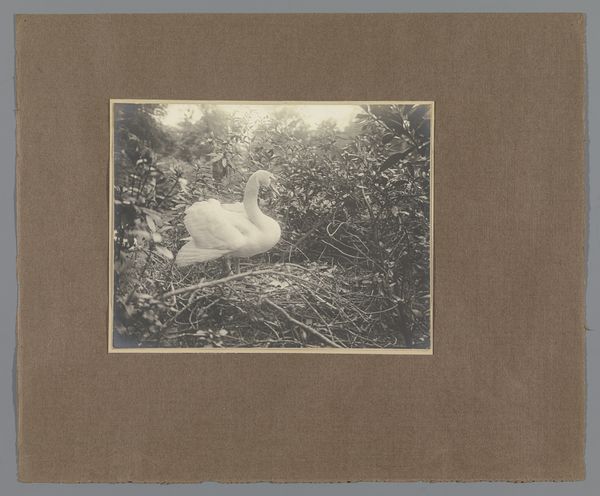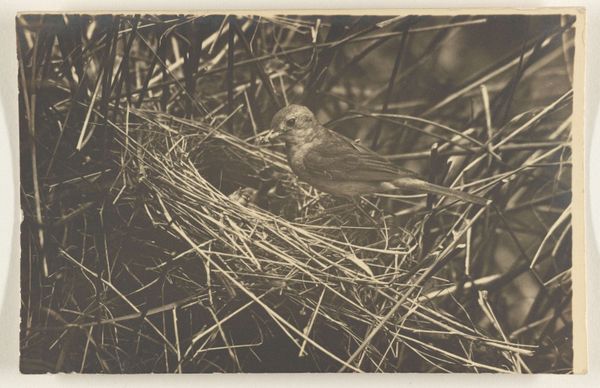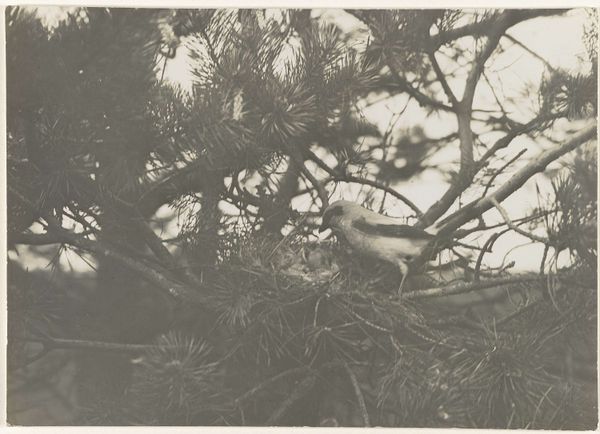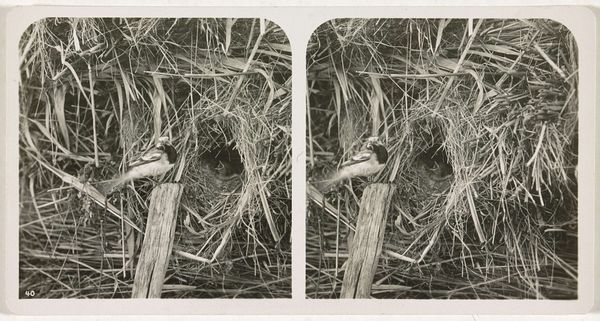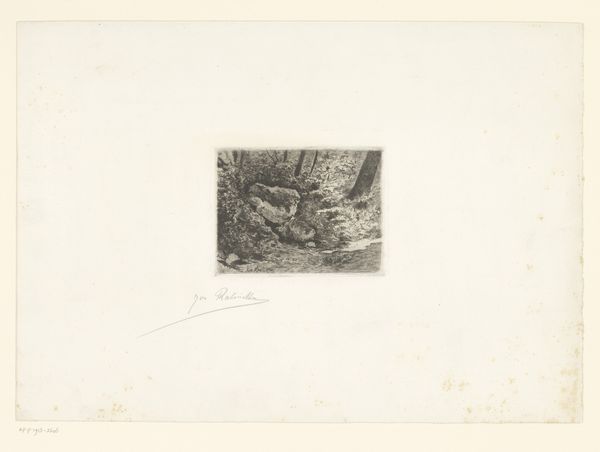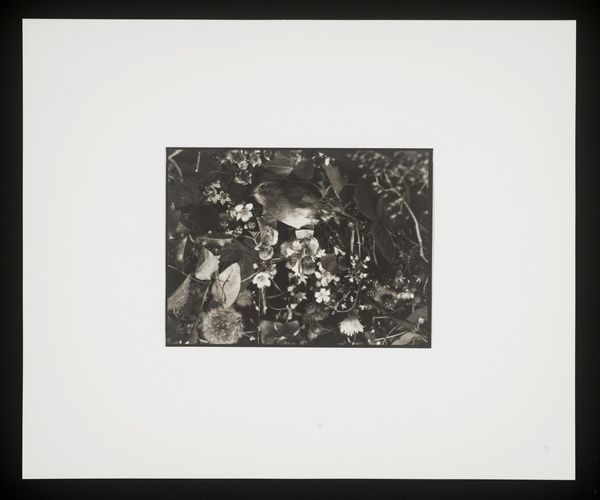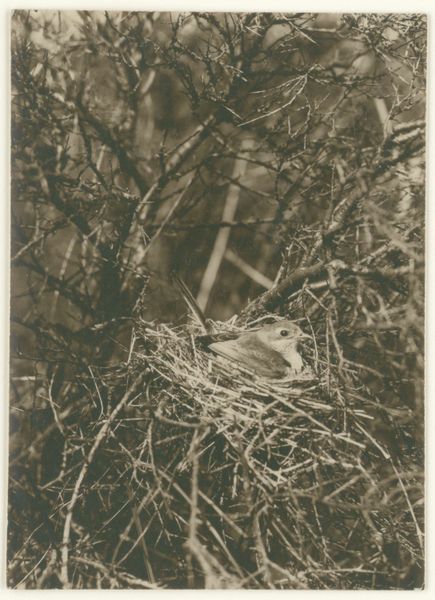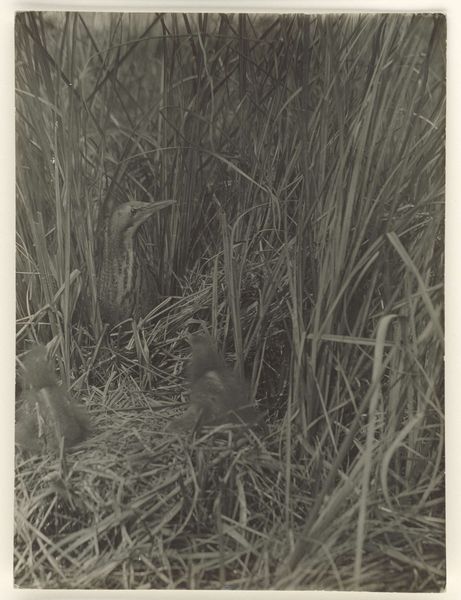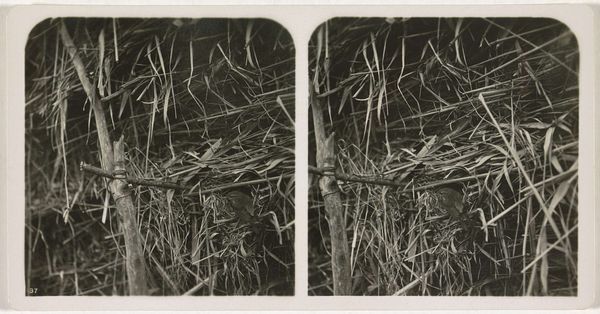
photography, gelatin-silver-print
#
landscape
#
photography
#
gelatin-silver-print
#
realism
#
monochrome
Dimensions: height 171 mm, width 228 mm, height 383 mm, width 325 mm
Copyright: Rijks Museum: Open Domain
Curator: This gelatin-silver print, taken sometime between 1900 and 1952 by Richard Tepe, is titled "Young Kestrels in a Nest". It is a remarkable example of realism and can be found here at the Rijksmuseum. Editor: Aww, look at these little fluffy punks! There's one clearly in charge. The light and shadows give it a wonderful mood of calm and vulnerability. They seem so peaceful nestled together. Curator: Tepe's photography often captured these serene, natural moments. His work appeared at a pivotal moment as ideas around nature, preservation, and photography itself were changing, and works like these reflect his interest in revealing untouched nature in a documentary style. It represents a time when cameras were seen as a new tool for scientific inquiry and conservation advocacy. Editor: Right, like a snapshot but without the selfie stick and filter, you know? There's also a sense of quiet intrusion. We're getting this private peek into their tiny, precious world. The focus feels sharp, almost scientific but not without an emotional aspect that adds another layer to how the natural world and humankind might collide in these creatures’ habitat. Curator: The photograph also represents changes in thinking around public access to nature at that time. As the urbanization increases so does the public sentiment surrounding natural beauty and these images become valuable tools for bringing that wilderness to viewers unable to experience these raw images in person. Editor: It’s curious what gets framed as “nature,” even within nature. Here is this nest built seemingly in the middle of nature itself! Where is “nature’s nature”? So to speak… The world just keeps on nesting. And this makes me nestle further into what is wild within me and what can be observed with a simple still image, where we ask to find nature in an unexpected medium that has tried for centuries to replicate nature, not unlike these sweet kestrels. Curator: It is precisely the photographic realism of images like these that have shaped our idea of what natural wilderness must be, for better or worse. Thank you for shedding light on that fascinating intersection, editor. Editor: Any time, curator, and thanks for making this trip to the nest of my imagination truly nest-worthy.
Comments
No comments
Be the first to comment and join the conversation on the ultimate creative platform.
